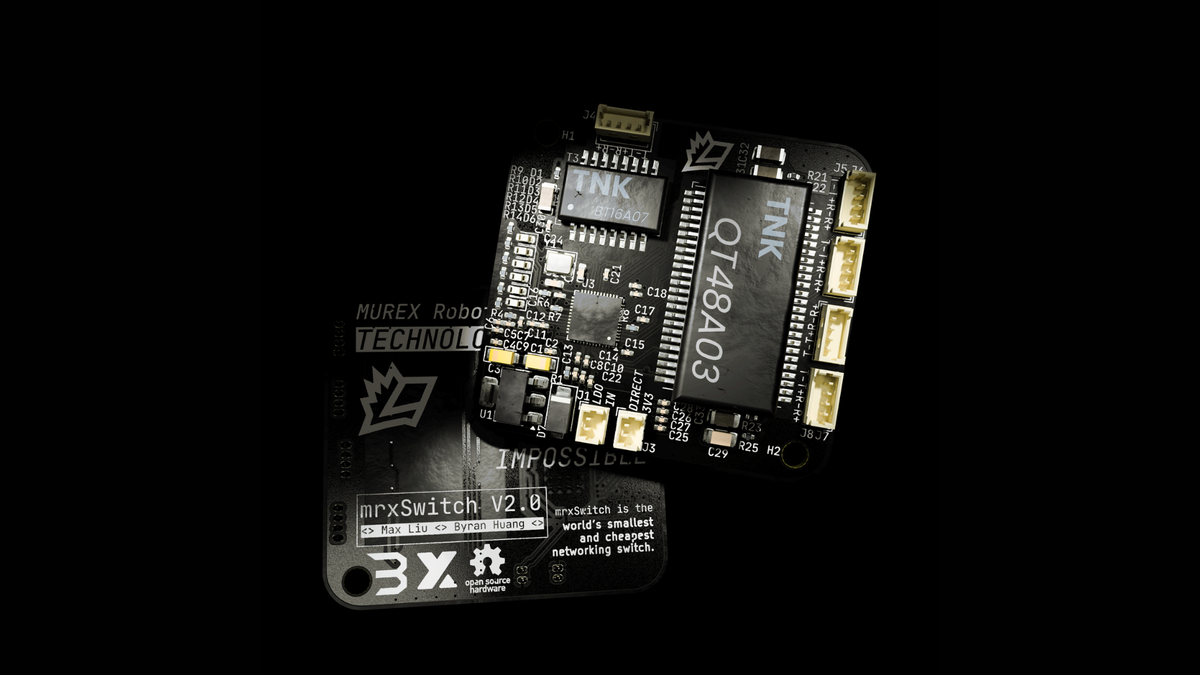Designed for use in a remotely piloted underwater rover, the mrxSwitch v2.0 supplies five 100 Mbps Ethernet ports at a footprint of only 44.9mm by 42.2mm. Network switches of this form factor are typically reserved for highly embedded systems; the team prioritizes its use in remote-operated underwater vehicles (ROVs) or autonomous underwater vehicles (AUVs), but IoT devices and other consumer devices with space constraints may have use for network switches this small. The mrxSwitch v2.0 represents a 30% size reduction over its predecessor, along with a BOM cost reduction of 15%, even with its smart-looking custom PCB.
Most solutions for network switches of this form factor are priced at a premium due to the narrowness of the use case, with MATE-sponsored options running from $75 to $175 – hence the decision to engineer an original solution. The mrxSwitch v2.0 stands at a current BOM price of $7. While you might not see it used in our best network switches (at least not yet), the build is a serious triumph for the young team.



The work is almost all done by integrated circuits, so what they did was basically supply the necessary crystal and caps to get the integrated circuits to work, add what looks like a voltage regulator to regulate supply and route the whole thing on what’s almost certainly a 4 layer board.
Also at the speeds we’re talking about we’re not yet in the domain of having to worry about stuff like the impedance of lines and the signals in absolutelly normal circuit board lines bouncing or getting distorted due to things like impedance mistmatch.
What’s impressive here is not the size of the thing (you would be surprised at how stupidly small even very complex functionality is nowadays - stuff like the
BlackberryRaspberry Pi-Zero is only as big as it is because of making available so many pins to connect to not because of the actual hardware), it’s that this is pretty advanced electronics for high-schoolers even with good teachers, as figuring this stuff out generally involves a lot of datasheet reading unless you’re starting from somebody else’s design.Yeah I was looking at it and was thinking the article writer is grossly misunderstanding the device. It looks like it’d be a fantastic item for their use case and it’s highly impressive that some high schoolers did that. But it’s not exactly a design that will take over for home and enterprise switching.
I assume you meant raspberry pi-zero and not blackberry?
Yeah.
“Blackberry” both felt wrong at the time and my brain kept telling me it was familiar hence it must be right.
Showing my years here ;)
Yeah. I’ll admit I got a bit excited at the idea that Blackberry might consider entering the mini-computer market and make a pi-type device.
Ah dang, I got excited for a sec. There is a Blackberry Pi project but it’s just a Raspberry Pi in the form factor of a Blackberry.